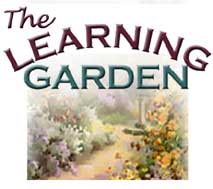
From Seed to Seed:
Plant Science for K-8 Educators
 |
From Seed to Seed: |
|
|
Creating Order from Diversity Humans, in their tireless pursuit of order and understanding, use different systems to organize and classify the diversity that they see around them. Ask your students to come up with things that they classify in their everyday lives. Music is an example-there's rock-n-roll, folk, country, jazz, classical. There are infinite ways to classify plants, and we do this frequently as we describe our garden plants. Annual or perennial? Root crop or fruit? Woody or herbaceous? Even desirable or undesirable (weed)? These kinds of classifications are often arbitrary and unclear, but botanically they serve many of us well! For years, botanists attempted to design a universal system of classification. As early as medieval times, scientists were giving plants Latin names-Latin being the language of scholarship. But the current system of nomenclature can be attributed to one man, Swedish botanist and naturalist Carolus Linnaeus (1707-1778). Before Linnaeus, a plant's name might have consisted of a genus, followed by a string of Latin descriptors five or six words long. Linnaeus devised a standardized shorthand system, in which all plants were given a two-word, or binomial, name consisting of a genus name and species name. Thank goodness! It's hard enough to remember two Latin names! Plant classification is a way of expressing what we understand to be the relationships among types of plants. Our current classification system is based on the hypothesis that all plants evolved from a single, less complex organism, and are therefore all related in some way. Imagining a big family tree can help you visualize the concept-some plants are closely related, some more distantly related. In fact, a great way to introduce plant classification is to have students create their own family trees. Using this as an analogy, students learn that just as they are more closely related to a sibling than to a cousin, a daisy is more closely related to a sunflower than to a pine tree.
Specialists in classification, called taxonomists, use various criteria for determining plant relationships. Classification is often based primarily on plant reproductive structures, including features such as flower morphology, and pollen and seed shapes. Other characteristics may also influence classification, from leaf vein patterns to more obscure details such as the structure of epidermal hairs. |
||||
|
Made possible by a grant from Oracle Corp. Copyright 2001, National Gardening
Association, Inc. For questions regarding this web site, contact Webmaster |